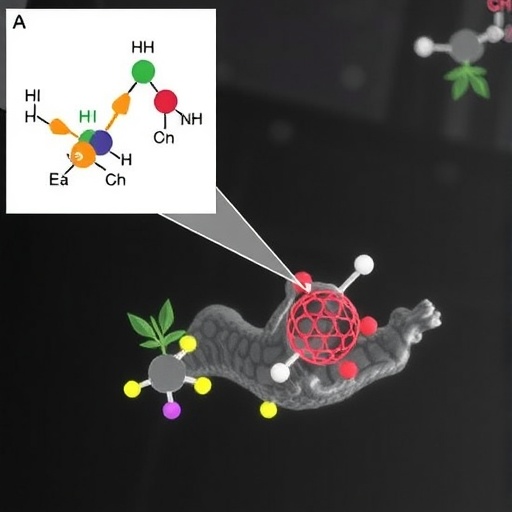SAN DIEGO, April 26, 2018 – A contemporary, real-world analysis shows lower mortality rates when culprit-only intervention is used for patients with multivessel disease (MVD) and acute myocardial infarction (AMI) with cardiogenic shock (CS). The authors compared culprit vessel intervention (CVI) to multivessel intervention (MVI) and presented the results today as late-breaking clinical science at the Society for Cardiovascular Angiography and Interventions (SCAI) 2018 Scientific Sessions.
In patients with AMI and CS, percutaneous coronary intervention (PCI) of the culprit vessel is associated with improved outcomes. However, a large majority of these patients have multivessel disease (MVD). Whether or not PCI of non-culprit disease in the acute setting improves outcomes is unclear. The results of this new study come on the heels of the recent randomized CULPRIT-SHOCK trial that was the first to find revascularization of all significant non-culprit lesions worsens outcomes. The late-breaking clinical science study is the most recent study to compare the two PCI strategies in this patient population.
The study assessed CVI versus MVI in 649 patients with AMI, CS and MVD that were enrolled in the British Columbia Cardiac Registry (2008-2014). All-cause mortality was evaluated at 30 days and one-year.
Compared with MVI, CVI was associated with lower mortality at 30 days (23.7 percent vs. 34.5 percent) and one-year (32.6 percent vs. 44.3 percent). CVI was an independent predictor for survival at 30 days (HR=0.78, 95 percent Cl: 0.64-0.97, p=0.023) and one-year (HR=0.78, 95 percent Cl: 0.64-0.97, p=0.023). The findings were confirmed in propensity-matched cohorts. Overall, in patients with AMI and CS, a CVI approach was associated with lower mortality.
"The comparison between culprit-only and multivessel intervention is a hot topic of conversation and debate in our field, and the results of our study add to the recent CULPRIT-SHOCK trial and help us better understand the positive outcomes of a culprit-only approach," said lead author Bilal Iqbal, Victoria Heart Institute Foundation, Canada. "The CULPRIT-SHOCK trial is the largest body of randomized evidence in the CS population. The recent Korean registry has shown that MVI may be better, but there are differences in the definition of MVI, making comparison difficult. Importantly, in CULPRIT-SHOCK and our study, MVI was defined as non-culprit PCI at the time of index intervention, and CVI was defined as PCI of culprit vessel only at the time of index intervention. Whereas in the Korean registry, MVI included non-culprit PCI, even if it were performed as an in-hospital staged procedure. Thus, it is conceivable that by adopting the definition of CVI used in our study and CULPRIT-SHOCK, the Korean study may have yielded different results."
The authors call for more randomized studies to further evaluate the two PCI strategies for this patient population in order to gain a better understanding of the safety and feasibility of culprit-only lesion approach.
Session Details: "Late-Breaking Clinical Science I: The prognostic impact of revascularization strategy in acute myocardial infarction and cardiogenic shock: insights from the British Columbia Cardiac Registry" [April 26, 2018, 11:00 a.m. – 12:00 p.m. PDT, Seaport DE]
About SCAI The Society for Cardiovascular Angiography and Interventions is a 4,200-member professional organization representing invasive and interventional cardiologists in approximately 75 nations. SCAI's mission is to promote excellence in invasive/interventional cardiovascular medicine through physician education and representation, and advancement of quality standards to enhance patient care.
For more information about the SCAI 2018 Scientific Sessions, visit SAN DIEGO, April 26, 2018 – A contemporary, real-world analysis shows lower mortality rates when culprit-only intervention is used for patients with multivessel disease (MVD) and acute myocardial infarction (AMI) with cardiogenic shock (CS). The authors compared culprit vessel intervention (CVI) to multivessel intervention (MVI) and presented the results today as late-breaking clinical science at the Society for Cardiovascular Angiography and Interventions (SCAI) 2018 Scientific Sessions.
In patients with AMI and CS, percutaneous coronary intervention (PCI) of the culprit vessel is associated with improved outcomes. However, a large majority of these patients have multivessel disease (MVD). Whether or not PCI of non-culprit disease in the acute setting improves outcomes is unclear. The results of this new study come on the heels of the recent randomized CULPRIT-SHOCK trial that was the first to find revascularization of all significant non-culprit lesions worsens outcomes. The late-breaking clinical science study is the most recent study to compare the two PCI strategies in this patient population.
The study assessed CVI versus MVI in 649 patients with AMI, CS and MVD that were enrolled in the British Columbia Cardiac Registry (2008-2014). All-cause mortality was evaluated at 30 days and one-year.
Compared with MVI, CVI was associated with lower mortality at 30 days (23.7 percent vs. 34.5 percent) and one-year (32.6 percent vs. 44.3 percent). CVI was an independent predictor for survival at 30 days (HR=0.78, 95 percent Cl: 0.64-0.97, p=0.023) and one-year (HR=0.78, 95 percent Cl: 0.64-0.97, p=0.023). The findings were confirmed in propensity-matched cohorts. Overall, in patients with AMI and CS, a CVI approach was associated with lower mortality.
"The comparison between culprit-only and multivessel intervention is a hot topic of conversation and debate in our field, and the results of our study add to the recent CULPRIT-SHOCK trial and help us better understand the positive outcomes of a culprit-only approach," said lead author Bilal Iqbal, Victoria Heart Institute Foundation, Canada. "The CULPRIT-SHOCK trial is the largest body of randomized evidence in the CS population. The recent Korean registry has shown that MVI may be better, but there are differences in the definition of MVI, making comparison difficult. Importantly, in CULPRIT-SHOCK and our study, MVI was defined as non-culprit PCI at the time of index intervention, and CVI was defined as PCI of culprit vessel only at the time of index intervention. Whereas in the Korean registry, MVI included non-culprit PCI, even if it were performed as an in-hospital staged procedure. Thus, it is conceivable that by adopting the definition of CVI used in our study and CULPRIT-SHOCK, the Korean study may have yielded different results."
The authors call for more randomized studies to further evaluate the two PCI strategies for this patient population in order to gain a better understanding of the safety and feasibility of culprit-only lesion approach.
Session Details: "Late-Breaking Clinical Science I: The prognostic impact of revascularization strategy in acute myocardial infarction and cardiogenic shock: insights from the British Columbia Cardiac Registry" [April 26, 2018, 11:00 a.m. – 12:00 p.m. PDT, Seaport DE]
###
About SCAI
The Society for Cardiovascular Angiography and Interventions is a 4,200-member professional organization representing invasive and interventional cardiologists in approximately 75 nations. SCAI's mission is to promote excellence in invasive/interventional cardiovascular medicine through physician education and representation, and advancement of quality standards to enhance patient care.
For more information about the SCAI 2018 Scientific Sessions, visit http://www.scai.org/SCAI2018/Default.aspx.
Media Contact
Kim Brown
[email protected]
202-498-2601
http://www.scai.org




